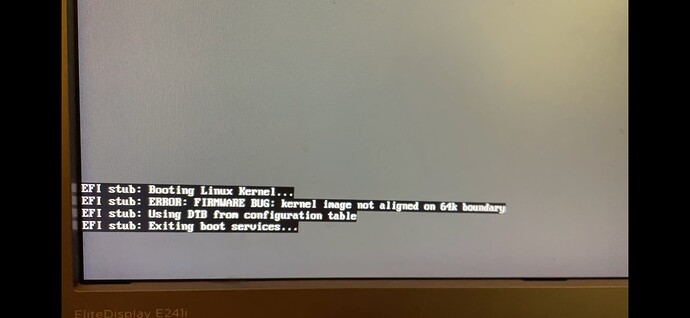Pew got it working yesterday but took a lot of trial and error.
Turned out that the nixos-hardware import wasn’t compatible with the UEFI installation.
However I still had massive problems and every rebuild after the initial generation resulted in a broken boot.
I tried as well to figure out which kernel modules are really required but as mentioned the boot always failed regardless of the change.
In addition booting took ages compared to the normal image, it just hanged for a long time at the GRUB screen after selecting the generation.
This was with a SD card only setup.
Tow-boot and PFT both gave me the same result.
This message came up as well:
I’m going to stick with the normal image for he moment since that works without a problem so far.
